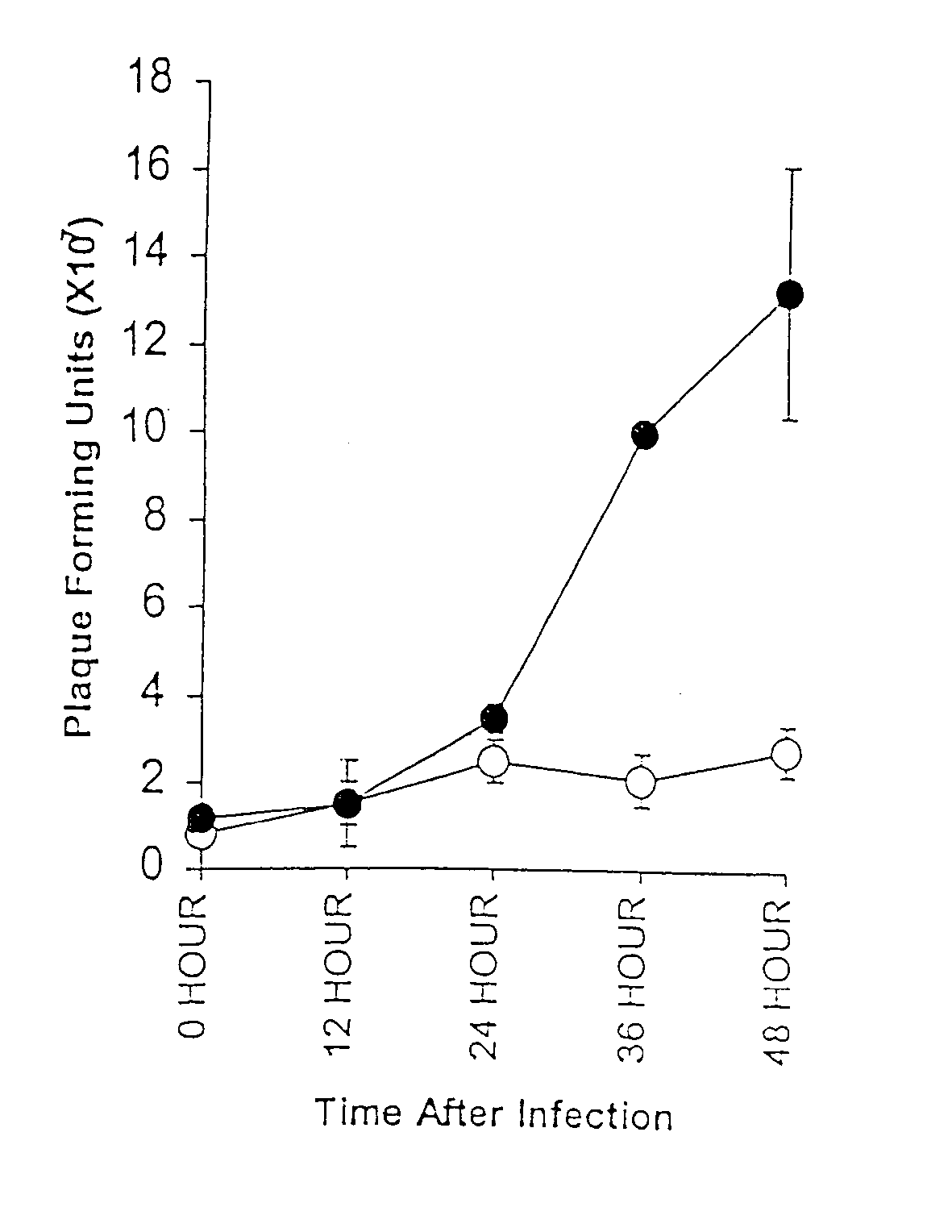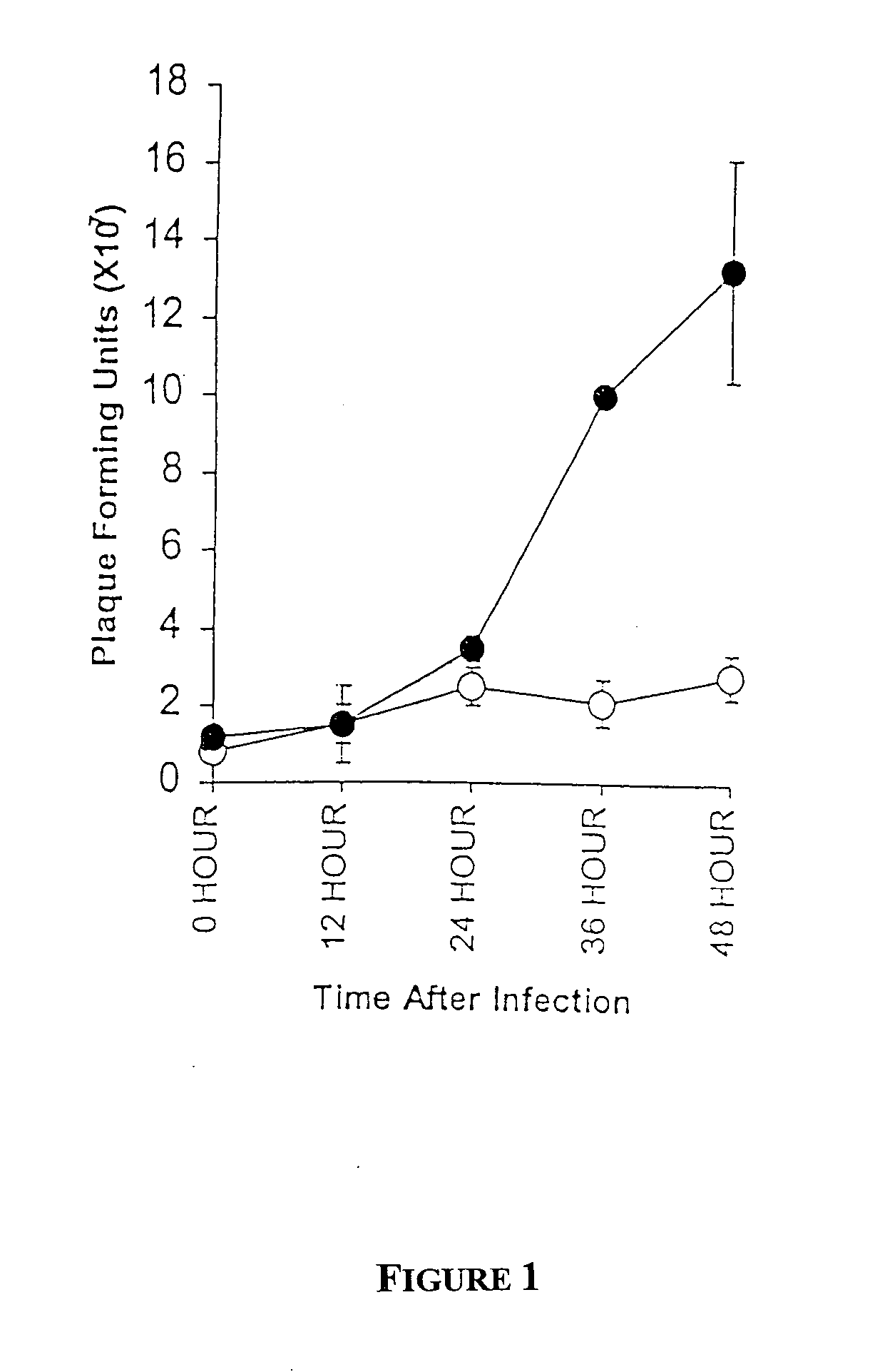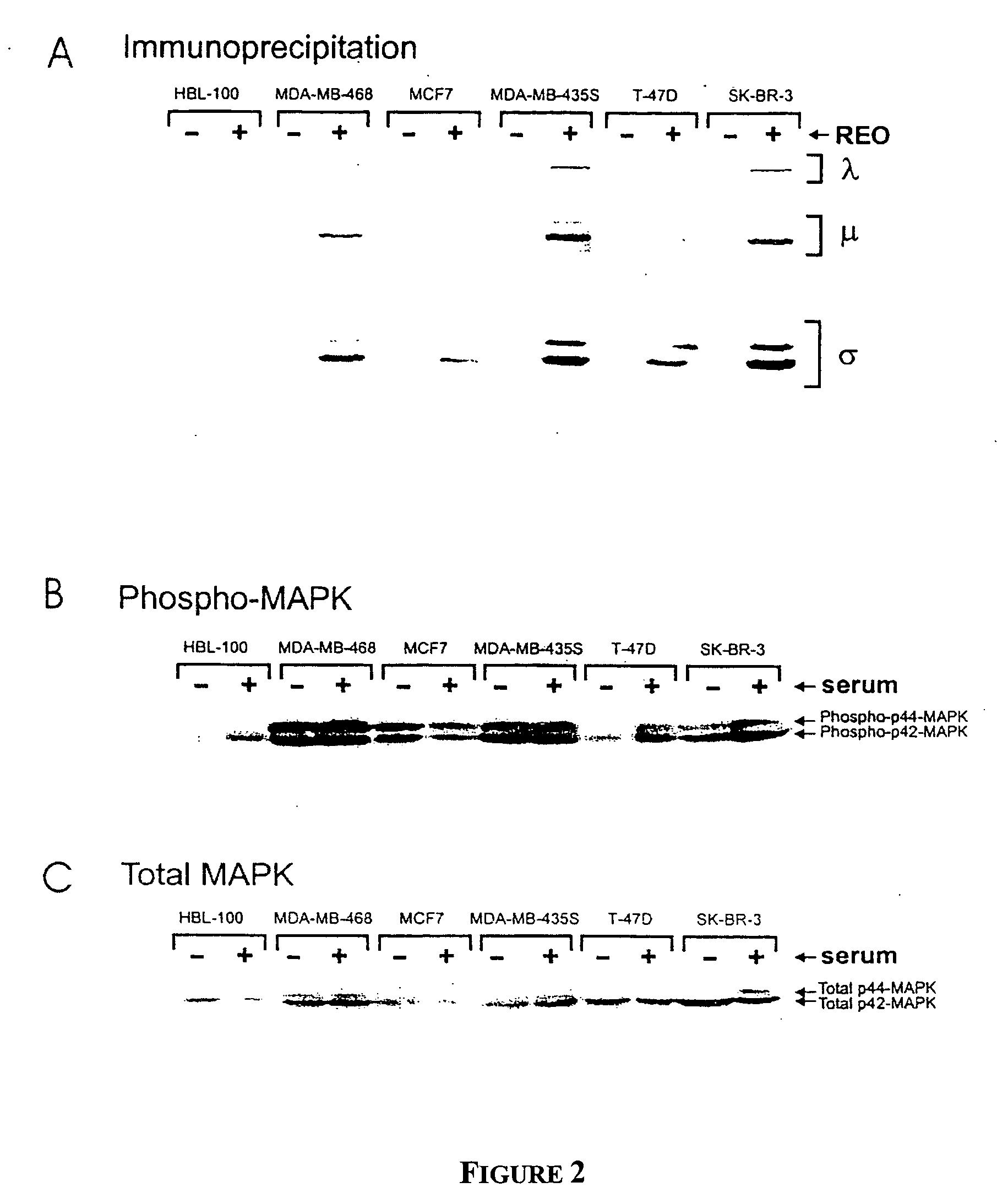Methods for the treatment of cellular proliferative disorders
a cell proliferative disorder and treatment method technology, applied in the field of cell proliferative disorder treatment methods, can solve the problems of preventing complete cure of cancer, many tumors cannot be completely removed by surgical means, and neoplastic growth (neoplasia), so as to reduce the safety concerns associated with deliberate administration of viruses, reduce the use of reovirus, and reduce the effect of treatmen
- Summary
- Abstract
- Description
- Claims
- Application Information
AI Technical Summary
Benefits of technology
Problems solved by technology
Method used
Image
Examples
example 1
Transformation by the v-src Non-Receptor Tyrosine Kinase Family Member Confers Susceptibility to Reovirus Infection
[0127] Although we have previously demonstrated that transfection of uninfectable NR6 and NIH-3T3 cells with receptor tyrosine kinases was sufficient to allow reovirus replication (Strong, 1993), whether transfection of non-receptor tyrosine kinases could result in reovirus susceptibility was unknown. To determine whether activation of Src family kinases, which frequently contribute to the uncontrolled proliferation of many breast cancers, results in sufficient Ras activity to enable reovirus replication, uninfectable NIH-3T3 cells were transformed with v-src and susceptibility to reovirus was assessed. Confluent monolayers of v-src transformed NIH-3T3 or their parental cells were exposed to reovirus at a multiplicity of infection (MOI) of ˜50 plaque forming units (PFUs) of reovirus. Cells and media were harvested at various times after infection and resultant samples ...
example 2
Reovirus can Infect a Panel of Human Breast Cancer Derived Cell Lines in which Constitutive Ras / MAPK signaling can be Assessed
[0128] To assess the feasibility of using reovirus against breast derived tumors a panel of breast cancer cells including: MDA-MB-468, MCF7, MDA-MB-435, T-47D, and SK-BR-3 was selected and susceptibility to reovirus infection in vitro was determined. As a control, HBL-100 cells, which are derived from normal breast tissue were used. These six cell lines were grown to 80% confluency and were then challenged with reovirus at an MOI of 10. Cells were labeled with [35S] methionine for a two-hour period at 48 hours postinfection. Cells were then washed in phosphate-buffered saline and were lysed. The prepared lysates were then used for immunoprecipitation using antibodies directed against total reovirus protein. Immunoprecipitated proteins were analyzed by sodium dodecyl sulfate polyacrylamide gel electrophoresis (SDS-PAGE). The results (FIG. 2A) clearly demonstr...
example 4
Reovirus can Replicate in Primary Breast Specimens
[0131] To ensure that the oncolytic effect of reovirus is not due to an innate characteristic of a passaged cell line, primary samples of human breast cancers were obtained to assess for reovirus infectability. Biopsy breast tumor samples were sterilized by immersion in 95% ethanol followed by several washes of sterile PBS. The sample was then sliced into small sections and placed in a 24 well plate containing DMEM with 10% FCS. Reovirus was added (1×108PFUs). At various times post infection, samples were washed in sterile PBS and then fixed in formalin. Samples were then embedded in paraffin and sectioned for use in immunohistochemical analysis using antibodies directed against total reovirus proteins. The results (not shown) clearly showed reovirus staining in those tumors challenged, demonstrating viral replication in these primary samples.
PUM
| Property | Measurement | Unit |
|---|---|---|
| diameter | aaaaa | aaaaa |
| proliferative disorder | aaaaa | aaaaa |
| resistance | aaaaa | aaaaa |
Abstract
Description
Claims
Application Information
 Login to View More
Login to View More - R&D
- Intellectual Property
- Life Sciences
- Materials
- Tech Scout
- Unparalleled Data Quality
- Higher Quality Content
- 60% Fewer Hallucinations
Browse by: Latest US Patents, China's latest patents, Technical Efficacy Thesaurus, Application Domain, Technology Topic, Popular Technical Reports.
© 2025 PatSnap. All rights reserved.Legal|Privacy policy|Modern Slavery Act Transparency Statement|Sitemap|About US| Contact US: help@patsnap.com



